
Paul Sterry has an academic background in freshwater biology and is a passionate conservationist. He has been writing about natural history and photographing wildlife for the last 40 years, with an emphasis on the British scene.
The Case for Caddisflies and much-maligned Molinia.
Over the past few years I have developed an interest in caddisflies – their life-cycles and ecology in particular – thanks in part to the enthusiasm of friend, neighbour and seasoned entomologist Graham Vick. All caddis are tied to water in one way or another by the aquatic or semi-aquatic requirements of their larvae and in Britain the group comprises some 200 species. Larval cases arouse a passing curiosity in most naturalists but the adults must be one of the most overlooked and neglected insect groups going.
In a way I can understand this given that with many species adults are enigmatically hard to observe and generally even harder to identify: the majority look rather uniformly brown and examination of wing venation and genitalia structure are needed to be certain what you are looking at. There are a few exceptions of course and my interest was piqued by Graham’s tales of one in particular – Hagenella clathrata. It sometimes goes by the English name Window-winged Sedge, the term ‘sedge’ being a fly-fishing soubriquet applied to the group as a whole. Hagenella must be one of the most attractive caddisflies going. It is also one of the rarest (or perhaps least-recorded), being known from just a handful of sites on raised bogs, wet heaths and the margins of enchantingly-name schwingmoors (quaking bogs to you and me). Northern Britain was thought to be its stronghold until relatively recently when its presence was confirmed on a few Surrey heaths by a band of seasoned local entomologists, along with Graham and legendary caddis expert Ian Wallace.
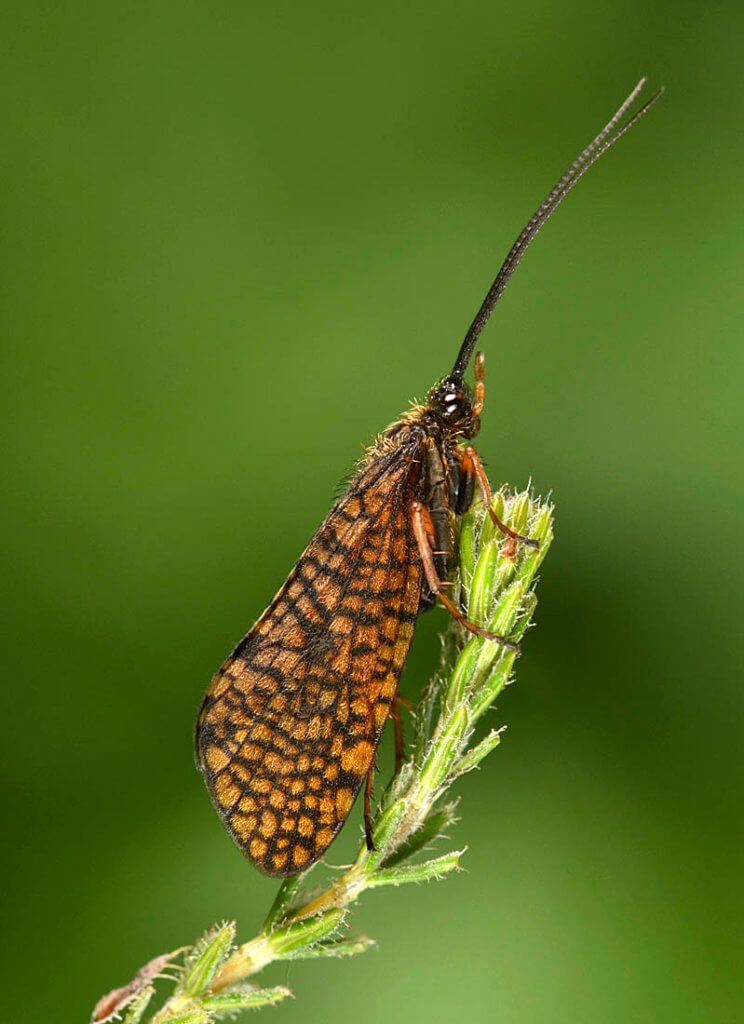
Hagenella clathrata, one of Britain’s rarest and most striking caddisflies. Photo: Paul Sterry-www.naturephotographers.co.uk
Given Hagenella’s distinctive appearance and the fact that adults are day-flying you might imagine it would be easy to observe. Not a bit of it. It bears a superficial resemblance to a Chequered Skipper Carterocephalus palaemon and has all of that species’ frustratingly enigmatic field characters. The following summary of its habits is based on personal observations and more extensive field work by Graham and Ian. Hagenella is on the wing in late May and early June, only flies on hot, sunny days, and seemingly only between the hours of about 16.00 and 17.30. On dull days, and when the sun is obscured by a passing cloud, it disappears without a trace. During the appointed time and only if the sun is shining, males perch on birch and willow bushes and take to the wing (flying as fast as a dragonfly) if they get a pheromonal whiff of a female (at least that’s what I assume stirs them into action). Females seem to lurk around clumps of vegetation and dive for cover at the first sign of danger.
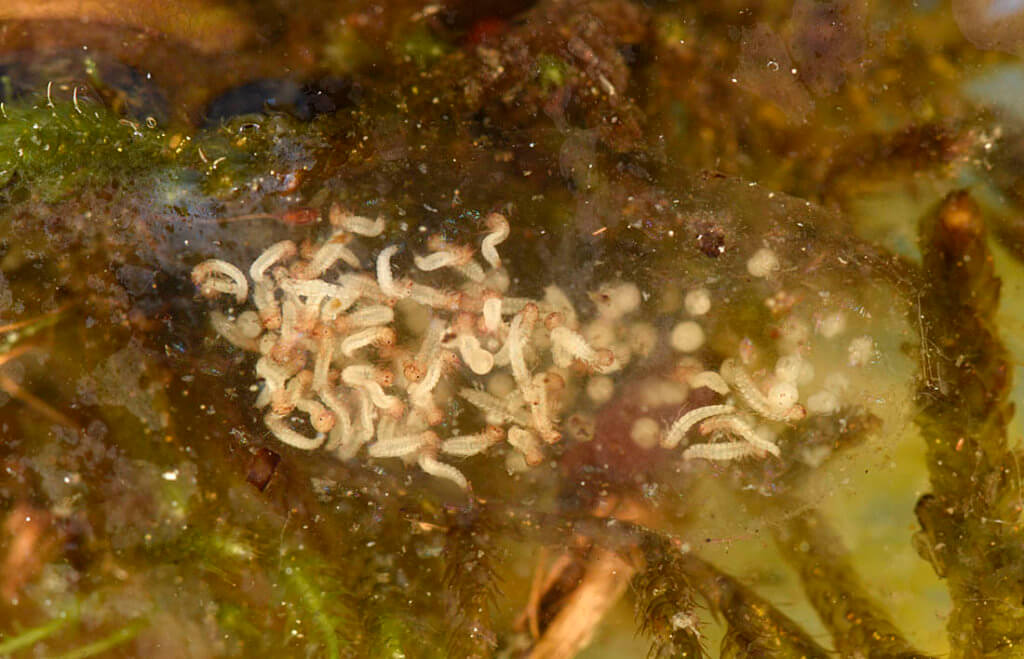
Egg mass and developing larvae of Hagenella clathrata. Photo: Paul Sterry-www.naturephotographers.co.uk
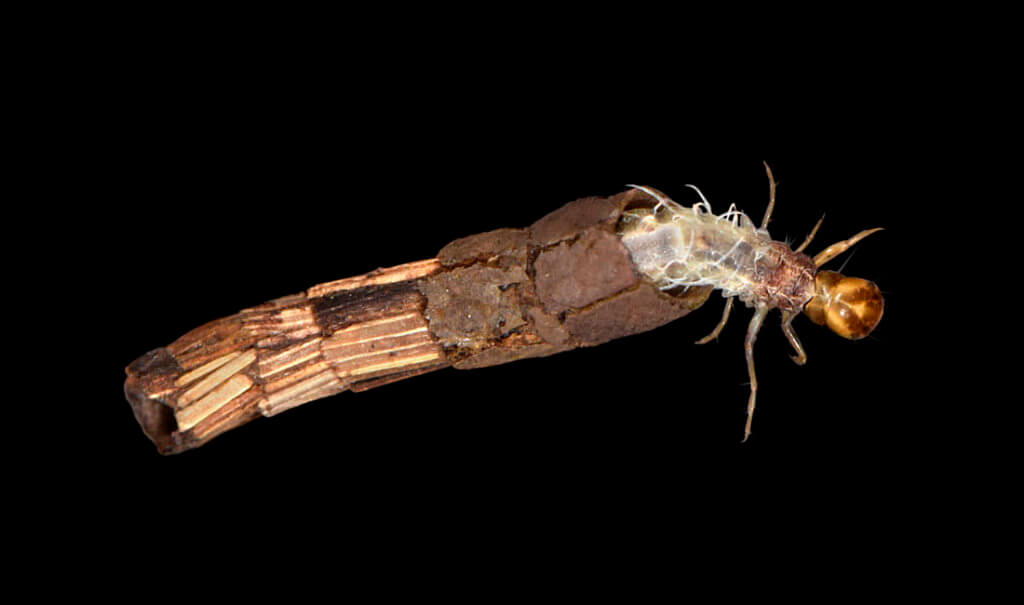
Use pic hagenella larva
Hagenella larva with its case made from fragments of birch leaves and strips of Molinia stem. Photo: Paul Sterry-www.naturephotographers.co.uk
My ecological curiosity was aroused by Hagenella’s chosen habitat. As with other locations in the UK, on Surrey heaths it is entirely restricted to areas where Molinia caerulea (Purple Moor-grass) is dominant. Previously, I had only really come across Molinia in conservation literature alongside the words ‘control’ and ‘management’. Apparently it can interfere with the perceived ‘favourable condition’ habitat quality so beloved of statutory nature conservation bodies with regards to Sites of Special Scientific Interest in particular. In places it is certainly a dominant plant but perhaps that might be for good, biological reasons. Anyway, regardless of its appearance and status it is vital to the life-cycle and survival of Hagenella clathrata. In prime Molinia habitat, dank-looking pools are present between mature clumps and it is amongst the weedy-looking Sphagnum and decaying plant debris that the remaining stages of the life-cycle (egg-laying, larval growth and pupation) appear to take place.
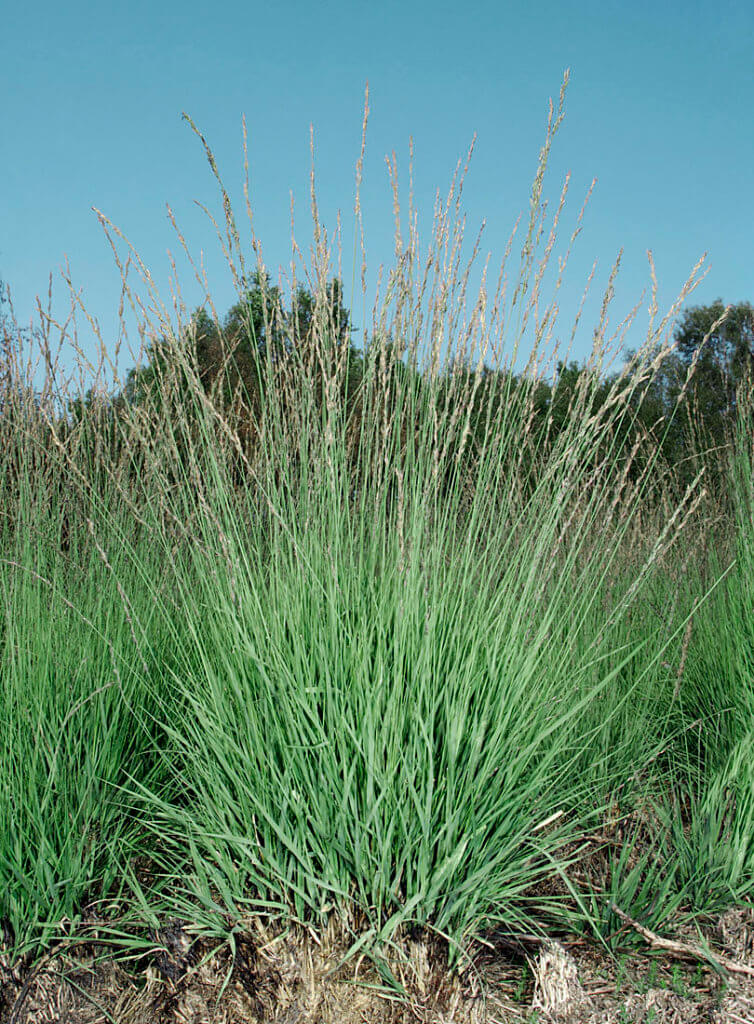
A typical clump of Molinia, otherwise known as Purple Moor-grass. Photo: Paul Sterry-www.naturephotographers.co.uk
So I would urge anyone with responsibility for habitat boasting swathes of Molinia clumps to be more circumspect in their approach to ‘managing’ the plant. Who knows, you might have one of Britain’s rarest insects hiding in plain sight on your land. With such a tricky species to observe, absence of evidence is not evidence of absence. For more information about Hagenella, look at Ian Wallace’s excellent Buglife dossier on the species.
As a further indication of the challenges of observing caddisfly adults and how easy it is to overlook them, it is worth considering one of the commonest species in the part of north Hampshire where I live. Here, Glyphotaelius pellucidus is associated with seasonally-drying woodland streams. The larvae make distinctive, flattened cases from leaf fragments and are fairly easy to find as they trundle along stream beds in late winter. But the egg-masses are the most conspicuous stage in the life-cycle: protected in jelly-like blobs, they are laid on leaves overhanging streams in early autumn. That the streams are typically dry at that time of year makes what happens next all the more remarkable: come the rains and flowing streams, the egg-masses liquefy and drip tiny wriggling larvae into the water below. How the adults recognise sites that will subsequently become streams, and hence where to lay their eggs, remains a mystery.
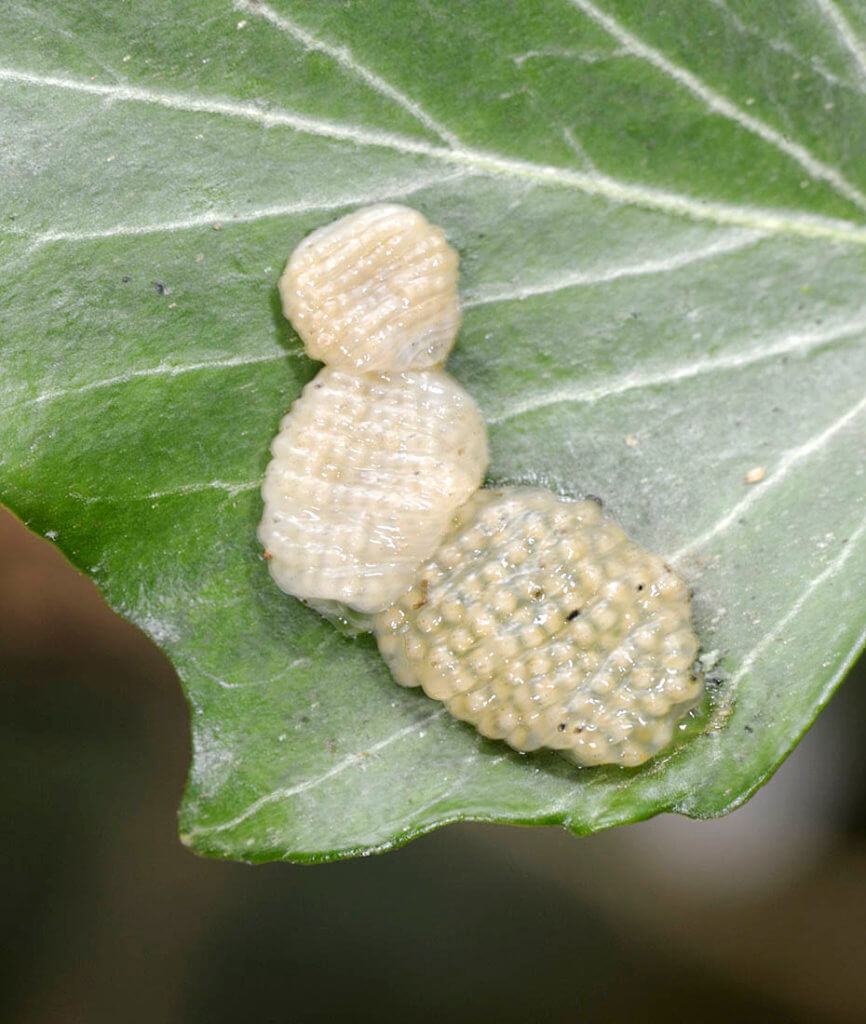
Jelly-like egg masses of Glyphotaelius pellucidus. Photo: Paul Sterry-www.naturephotographers.co.uk
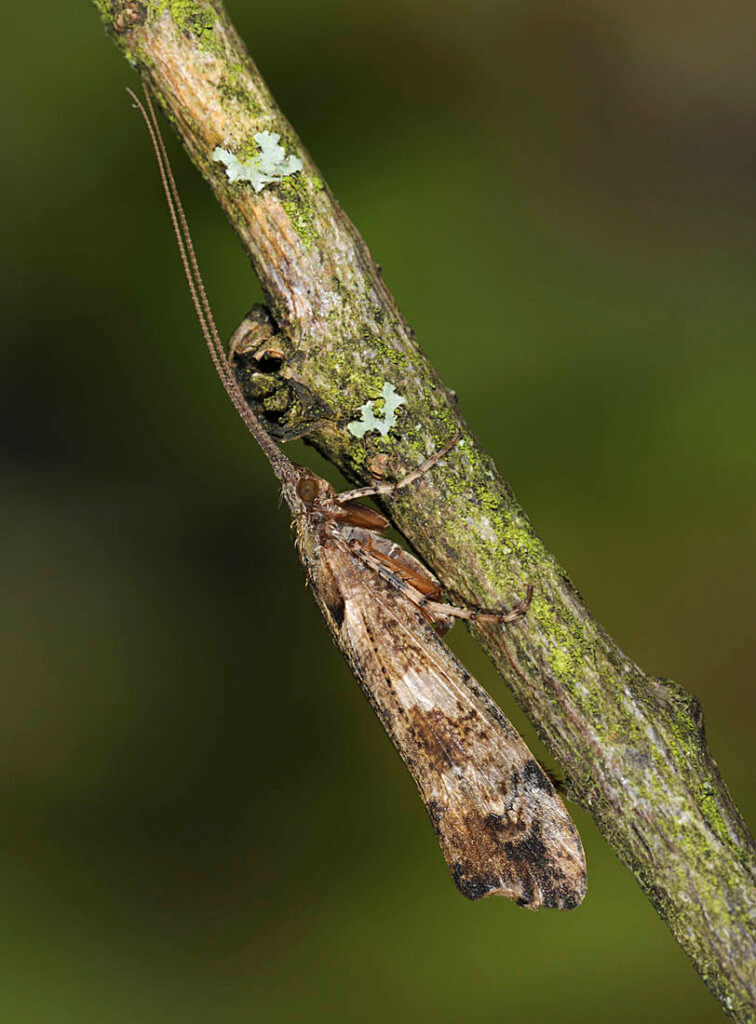
An adult Glyphotaelius pellucidus Photo: Paul Sterry-www.naturephotographers.co.uk
Despite the relative abundance of egg-masses (perhaps 100+ suspended over a 20 metre stretch of steam) I can probably count the number of times I have ever seen an adult (away from a light trap) on one hand. And that’s with a species that is undeniably common and an observer who is actively on the look-out for them.
[registration_form]
Ah a welcome return to a much missed blog read each day and with a splendid Paul Sterry guest blog to boot, complete with Paul’s trademark wonderful macro photos. I know little about caddis, I see larvae frequently in local ponds streams and the R. Severn and adults in our moth trap, perhaps I need to pay more attention to them.
Very interesting blog which tells us about the value of things not obviously seen. The first few long term management plans for Pennine Uplands all advocate removal of Molinia by dosing with Glyphosate. I can imagine the answer Paul but what do you think will be the effect on local insect populations including Caddis?
Excellent article and fabulous photos. I must get some much better photos of Hagenella clathrata. I pride myself on my macro photography, but have only got not so good record shots of this species. Mainly because whenever I’ve found the adults it’s taken me by surprise and I wasn’t really set up to photograph them.
I’m lucky as Fenns and Whixall Moss NNR is one of the main populations. But I’ve missed Ian Wallace each time on his yearly visits, so aside from knowing roughly where to look I didn’t have much idea of their habits or behaviour. I haven’t been able to learn myself because my sightings have been haphazard and never frequent enough to learn much about them. So the tips on the time of day and weather conditions will help me find and locate more of them. The other problem being the period they’re out is a busy time of the year for other target species.
Speaking as one who was responsible for the management of quite a few nature reserves for quite a few years, I learned rapidly to take most proposed management prescriptions of single-species enthusiasts with a large pinch of salt. They were often mutually exclusive (Mollinia isn’t good for many other heathland and moorland species, plus I strongly suspect that rare caddis flies, like a lot of rare lichens and rare snails, are simply an artefact of rare recorders).
Frequently, taken together, the collective instructions of specialist naturalists amounted to “do nothing whatsoever so we can then complain when all our rare species disappear”. Chalk grassland was the classic, between the botanists and the entymologists the only time no-one objected to grazing was winter, when the livestock won’t eat the scrub either, so the site would have ceased to be the short chalk grassland the flowers, butterflies, and naturalists all wanted if I’d followed their collective advice. Or the former wood pasture, where a renowned bat expert demanded that we not cut back the trees around the glades, let alone reintroduce grazing, because the glades were so vital to the bats that they couldn’t be touched. Meantime the very same glades were disappearing year on year because of tree and scrub encroachment, having shrunk by at least half just in my time.
My rule of thumb; if you repeat exactly the ideal management for any one species every year, year after year, you guarantee its long term extinction. That’s one reason why backing off from micro management and going down the re naturalisation route makes a lot more sense to me. Let’s be honest, we are never going to be short of Mollinia.
Did you read the excellent Ian Wallace/Buglife account of Hagenella clathrata linked to in the article? If you had you’d realise that this is not only a rare insect in Britain, but in most of Europe. Yes, it is likely or possible it is present at other sites. However, your insinuation that it’s probably far more common and just has rare recorders is almost certainly mistaken. It’s a very distinctive species, and flies during the day. In other words it is almost certain that whilst it might be found at a few more sites, that it’s unlikely to be found throughout Molinia dominated habitat as you’re implying.
“Mollinia isn’t good for many other heathland and moorland species,” I’ve been familiar with Molinia for a long time, it’s ecology, and it’s predominance in modern times on the sort of relict habitat where it seems to take over. However, it needs to be noted that it is a native species, and a natural component of this type of habitat. Given the very specific requirements of Hagenella clathrata it would appear that at least some Molinia dominated components of the sites where it’s found must have persisted for a long time. This is because if there hadn’t always been some Molinia dominated areas where it forms big tussocks, then Hagenella clathrata couldn’t have persisted, because there would have been no nearby reservoir of this species to re-colonise the site i.e some Molinia dominated habitat must have persisted for many thousands of years with an unbroken presence.
Fair points! But is anyone really suggesting removing all the Mollinia on the sites where it is found? Do you think that’s do-able if they tried? Does maintaining Mollinia require never touching it? In my lowland experience its remarkably resilient against everything – except being left alone to get shaded out by scrub.
The article does ask that people not manage Mollinia (implication anywhere) because “absence of evidence is not evidence of absence”. So it is asserting that every site manager with Mollinia should do nothing until they’ve commissioned one of the handful of people capable of identifying this particular species to check for it? Is one check enough? What time of year do you check and how long should management be put on hold awaiting the all-clear? OK, I’m overstating things, but I think my general point stands. Not doing things you should do, because you’re afraid that a there might be a chance of adversely impacting a rare species that might, possibly, maybe, be on the site, can have significant adverse consequences in itself.
And when its a rare species in a common habitat the implications of a policy of “absence of evidence is not evidence of absence” are significant. Apply that to every one of the 00s of rare species that live in otherwise common habitats and no-one will be able to do anything anywhere. Lots of species will become locally extinct, probably including some which are positively known to be on the sites in question, probably including some that are more threatened than the single rare caddis.
Common sense and a sense of proportion is called for, I suggest. Just to be clear, if the rare caddis (or whatever) *is* known from the site, or nearby, that’s a different matter.
I don’t want to be over-stating my knowledge on this, but I have seen Molinia dynamics over decades on sites and have seen how it responds to attempts to control it over the longer term. Basically Molinia seems to have a slow strategy, and although when cleared the areas at first appear to revert to other dominant forms of vegetation, in the long term the Molinia wins out and it’s back to square one.
Personally I think it’s all about getting the hydrological regime sorted, because it’s the drying out in the summer which seems to favour Molinia.
I’m not an expert on Hagenella clathrata, but I spend a lot of time on a major site for it. It’s not any old type of Molinia habitat which favours Hagenella clathrata. On Fenns and Whixall Moss NNR Molinia predominates across much of the site, but only a few small areas appear to have Hagenella clathrata. The specific type of Molinia habitat it seems to favour are where they are well developed tussocks of Molinia, and where it floods in the runnels between tussocks over-winter, but without complete inundation. It’s possible to recognise the habitat type, but much more difficult to describe the precise conditions.
ps – the glade work was done and grazing reintroduced, and the bats are still thriving all these years later!